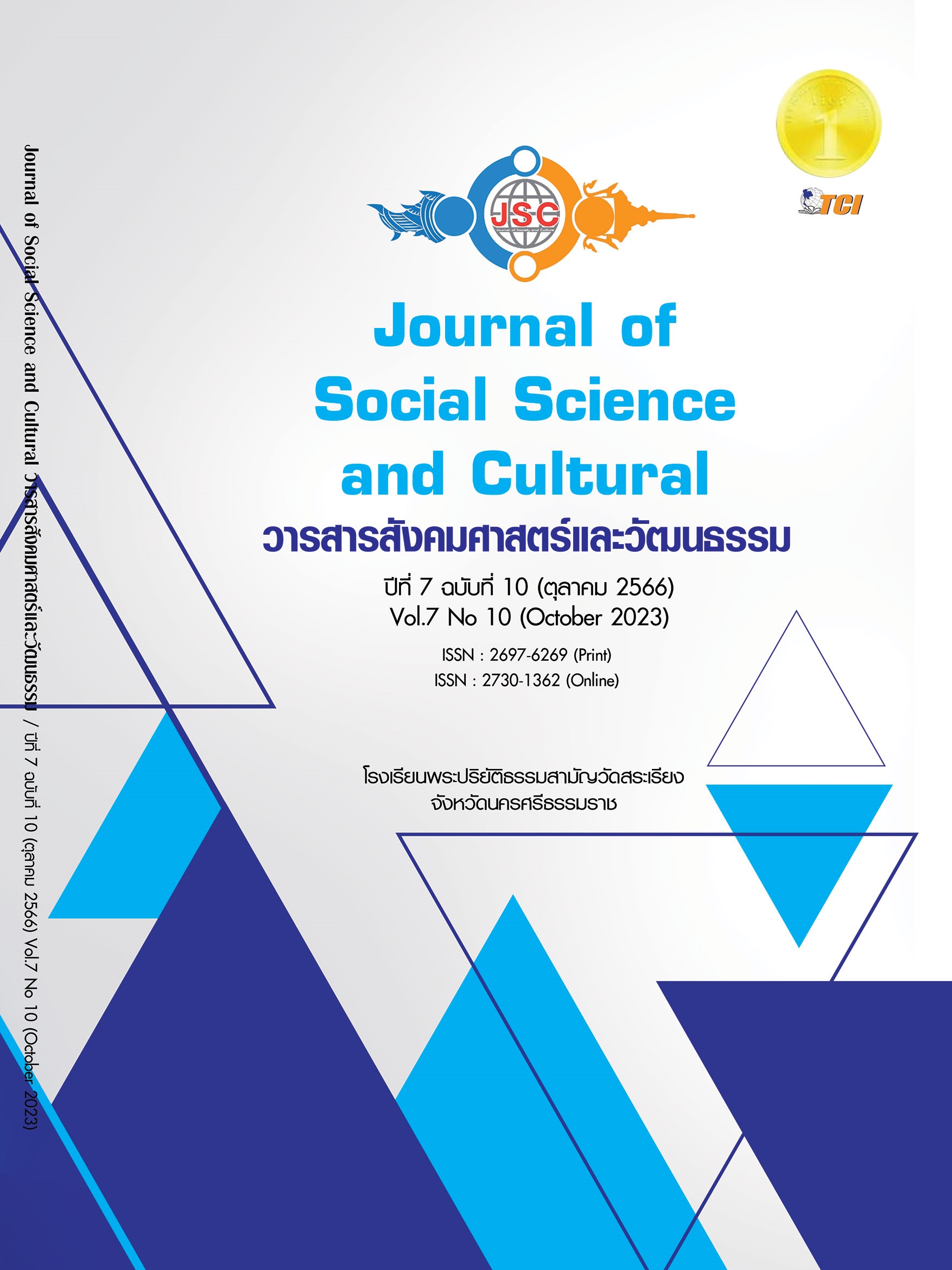BRAND DESIGN AND DEVELOPMENT FOR IDENTITY AND VALUE CREATION FOR BIOMASS CHARCOAL BRIQUETTE OF NONG LENG PATTANA ENTERPRISE, CHONBURI PROVINCE
Main Article Content
Abstract
This research article was aimed: 1) to study conditions and problems in brand design and development, 2) to design and develop branding to create identity and create value to biomass charcoal briquette of Nong Leng Pattana enterprise in Chonburi province, and 3) to transfer the knowledge obtained from the research results using a mixed research model. An in-depth personal interview was used as qualitative research tool. The 25 main informants were specifically selected, including community representatives, those who have income from community products, academics and related agencies. For quantitative analysis, a questionnaire was used to collect the data from population of 50 people. Key informants included community committee representatives, people and those who have income from selling community products, academics, agencies related to community product policy formulation in Thailand and people in the community. The results were as follow: the charcoal briquettes market was highly saturated. There were many brands that offered similar products. This led to a lack of product differentiation. Moreover, consumers were price sensitive. Many consumers were still unaware of the benefits and differences between different types of biomass charcoal briquettes. This made it difficult for brands to communicate specific features effectively. Limited distribution channels affected brand reach. The study of brand design showed that the brand name of the product is “Charcoal Man”. The phrase means people in the community whose main occupation is traditional charcoal burning and they are proficient in burning charcoal. The logo was designed in a Thai word with the image of charcoal was used instead of a Thai vowel ‘Sara-um’ and below was a picture of people joined together as one expressing community products. The logo was also designed to look like a charcoal kiln and a leaf-like shape was used instead of a Thai vowel ‘Mai-ek’ expressing the identity of the product that is environmentally friendly. As for the branding guidelines, it should be proceeded according to the concept of 3i Model including brand identity, brand image, and brand integrity. In addition, the results of transferring knowledge from research to community enterprises and interested parties found that they could actually be practically increased the competitiveness of entrepreneurs, and it could generate income and add value to products, as well.
Article Details
References
พิทักษ์ ศิริวงศ์ และคณะ. (2558). การสร้างมูลค่าเพิ่มที่ปรากฏอยู่บนป้ายฉลากสินค้าประเภทน้ำดื่มบรรจุขวด. ใน การประชุมวิชาการด้านการจัดการระดับชาติ “วลัยลักษณ์ วิจัยทางการจัดการ ครั้งที่ 4”. มหาวิทยาลัยวลัยลักษณ์.
มนตรี เหงียศิริ. (26 กันยายน 2564). ของวิสาหกิจชุมชนหนองเลงพัฒนา. (น้ำฝน ใจดี, ผู้สัมภาษณ์)
สำนักงานนโยบายและยุทธศาสตร์การค้า กระทรวงพาณิชย์. (2564). รายงานการศึกษาการพัฒนาศักยภาพของวิสาหกิจชุมชน/วิสาหกิจเพื่อสังคมเพื่อยกระดับเศรษฐกิจฐานราก. กรุงเทพมหานคร: บริษัท อมรินทร์พริ้นติ้งแอนด์พับลิชชิ่ง จำกัด (มหาชน).
สำนักงานมาตรฐานอุตสาหกรรม (สมอ.). (2562). มาตรฐานผลิตภัณฑ์ชุมชน ถ่านอัดแท่ง มผช. 238/2547. กรุงเทพมหานคร: กระทรวงอุตสาหกรรม.
สุภางค์ จันทวานิช. (2552). การวิเคราะห์ข้อมูลในการวิจัยเชิงคุณภาพ. (พิมพ์ครั้งที่ 9). กรุงเทพมหานคร: สำนักพิมพ์แห่งจุฬาลงกรณ์มหาวิทยาลัย.
ออตมัน, เจ. เอ. (2554). The new rules of Green marketing [Green marketing พิมพ์เขียวการตลาดวิวัฒน์โลก]. กรุงเทพมหานคร: เออาร์ไอพี.
Aaker, D. A. (1991). Managing brand equity: capitalizing on the value of a brand name. New York: Free Press.
Duncan, T. R. (2002). IMC: Using advertising and promotion to build brands. New York: McGraw-hill.
Keller, K. L. (2008). Strategic brand management, Eaglewood Cliffs. New Jersey: Prentice Hall.
Keller, K. L., & Swaminathan, V. (2020). Strategic brand management: Building, measuring, and managing brand equity. United Kingdom: Pearson Education.
Kotler, P. (2003). Marketing management: Analysis planning, implementation, and control. New Jersey: Prentice Hall.
Kotler, P. et al. (2010). Marketing 3.0: From products to customers to the human spirit. New Jersey: John Wiley & Sons, Inc.
Miles, M. B. & Huberman, A. M. . (1994). Qualitative Data Analysis: An Expanded Sourcebook. (2nd Edition). Thousand Oaks, CA: SAGE.
Mootee, I. (2013). Design Thinking for Strategic Innovation: What They Can’t Teach You at Business or Design School. New Jersey: John Wiley and Sons.
Nastasi. B. K. & Schensul, S. L. (2005). Contributions of qualitative research to the validity of intervention research. Journal of School Psychology, 43(3), 177-195.
Temporal, P. (2002). Advanced Brand Management from Vision to Valuation. New Jersey: John Wiley and Sons.

